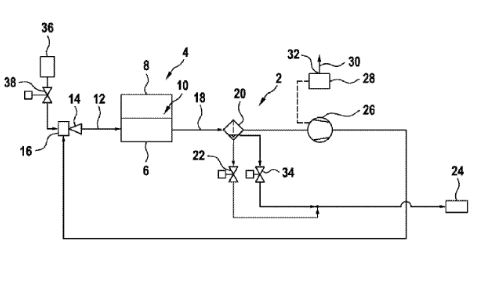The patent in discussion introduces a novel fuel cell system, comprising several integral components designed to enhance the functionality and efficiency of the overall setup.
This innovative system is centered around the careful management of water within the fuel cell, leveraging advanced technology in power consumption detection and signal generation.
At the heart of the system lies a single or a series of fuel cells, each with a necessary anode, cathode, and hydrogen supply line. A jet pump plays a critical role attached to the hydrogen supply line, working in unison with various other components including an anode exhaust gas line, water separator, discharge valve, and gas conveyor unit. This collaboration creates a streamlined cycle aimed at optimal performance.
A prominent feature of this design is the water separator, strategically connected to the anode exhaust gas line. Its principal function is to efficiently separate and collect water from the anode exhaust. Proper water management is crucial as it minimizes potential clogging or dilution of gases within the system. Upon successful separation, the linked discharge valve facilitates the release of collected water, ensuring consistent system functionality.
The gas conveyor unit is ingeniously devised to recirculate anode exhaust gas back into the hydrogen supply line via the jet pump. This recirculation not only supports sustainability within the system but also underscores the efficiency of resource usage, reducing wastage and augmenting the overall balance of input-output ratios.
A highlight of this patent is the control unit’s pivotal role. This element is configured to monitor power consumption within the gas conveyor unit, especially during the discharge of excess water. It is programmed to detect power drops by a defined percentage, ultimately marking the complete evacuation of the water separator. The importance of this detection is manifested in the automatic generation of a control signal, which signifies an emptied separator and is crucial for maintaining optimal operational conditions.
